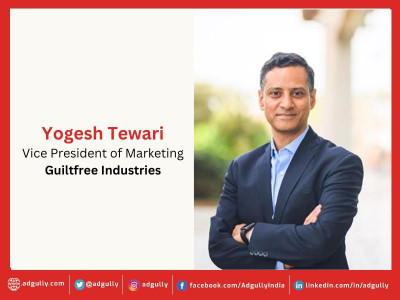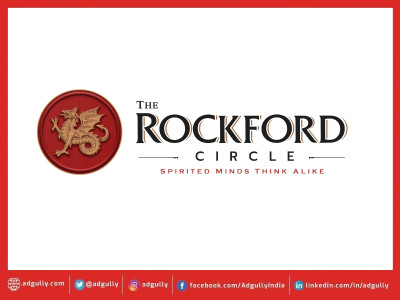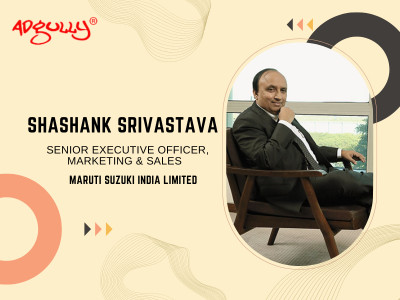The Indian Ethnic Co - The journey from being bedroom-preneurs to Rs 6-cr turnover
Shrugging off the disruptions of last year, businesses and agencies are looking for a strong revival in 2021. Adgully – as part of our annual TRENDING NOW endeavour – has been presenting the strategies and views of a cross-section of industry leaders as they go about reclaiming lost time and market opportunities and build for a stronger future, armed with the lessons of 2020.
While the global pandemic has bought economies to a halt and massively disrupted businesses, it has also fuelled start-up dreams and we even saw several Indian start-ups achieve Unicorn status during the pandemic period. The times have never been better for the budding entrepreneurs to give wings to their start-up dreams.
Co-founded by the mother-daughter duo of Hetal Desai (Chief Creative Designer) and Lekhinee Desai (sales & marketing), who also happen to be ardent handloom lovers, The Indian Ethnic Co., started life in the bedroom of a small family. Neither Hetal nor Lekhinee have any formal training in fashion, but their passion and sheer guts have seen The Indian Ethnic Co. Garner a turnover of Rs 6 crore. Over the 2 years, the venture has worked with not only master artisans, but also supported small scale artisans in its endeavour to further the brand and also uplift the community that its works along with.
In this interaction with Adgully, Lekhinee Desai, Co-founder & Marketing Head, The Indian Ethnic Co, speaks at length about how they went from being ‘bedroom-preneurs’ to a case study for Facebook for successful use of digital ads.
Please take us through your journey as an entrepreneur. What motivated you to establish your start-up? What were you doing prior to turning an entrepreneur?
My mother, Hetal Desai, the co-founder, the one woman army behind this brand, has always lived by this mantra and so here is her and our story. At 55 and after having spent 27 years of her life selflessly discharging her duties towards her daughters (aged 18 & 24) and family and seeing herself play a part in their success surely felt fulfilling. She felt our lives would take their own course and it suddenly felt that her life needed a larger purpose to look forward to. With no formal education in fashion, she had a flourishing fashion designing practice back in her hey days, which she gave up without any qualms to work for a brighter future for us. Over the years, she fulfilled her passion for designing by creating unique dresses for us, which were always appreciated by everyone. She never liked anything that was readymade in the market. It was always very common, couldn’t be customised to her preferences, and the one’s that she liked were always very expensive.
I nudged my mother that she must get back to what she does best – making the most beautiful clothes.
With me starting to pursue my MBA and my sister medicine, my mom was left with a lot of free time considering she was a homemaker. We thought it would be a great idea and hobby for my mom to kickstart a mini fashion brand that would help her spend her time constructively through the latter part of her life. Handicrafts and handlooms have always been our passion and we have only worn handcrafted products all our life. This brand was an outcome of that passion.
Social Media shopping was just gaining steam and we thought that it would turn out to be a cheap experiment to sell through social media as it would not call for any heavy upfront investment. Moreover, we thought that even if the initial sample garments we make to sell on our page do not sell, my sister and I could wear them off. You could actually call this like a no risk experiment!
So we started our IG and FB pages, ordered a small 50 meters batch of Ajrakh fabric from the master Ajrakh artisan in Kutch with an investment of only Rs 50k, made some kurtas, clicked the photos on our phone, made my sister model them, uploaded on Instagram & Facebook and the rest is history! The garments were gone! All sold out in a matter of a few days! It felt like magic. IG & FB had provided us a platform to reach out to customers worldwide, without a website just by sitting in our bedroom. We were officially BEDROOM-PRENEURS!
In 2016, it was a hobby brand, an experiment started with 50 meters of fabric from 1 artisan, with Rs 50k worth of investment and with operations managed from our tiny, humble bedroom in Mumbai with 2 people – my mom managing designing and sourcing and I managing social media & digital sales alongside my MBA degree. For the first two years we continued selling only through social media since I was pursuing my MBA, but even then the brand was growing faster than our expectations. We officially launched our website and registered our brand only in 2018.
Fast forward to 2021, we have an inventory of 50,000 meters of fabric, a turnover of Rs 6 crore, with three full-fledged offices in Mumbai and a staff of 25, working with over 100 master artisans of Indian handicrafts. I also left my job that I took up with ITC in their FMCG division after my MBA and now I manage this brand full time along with my mom.
For a business that was conceptualised and run out of a 400 sq feet living room in Mumbai, with no prior business experience, we had never imagined that our creations had the power to dress 3,000 people living in 450+ cities and 19 countries, just in a matter of 1 year!
Our website launched on May 21 2018 and clocked an annual turnover of Rs 1 crore in less than a year, with operations being managed from just 1 living room and 2 women! They say “scarcity is the mother of inventions”.
Being bootstrapped and funding the business from our savings, in the initial 4 years, we did not spend any money in taking the help of any professional with either our product photography, which we managed from my our iPhone, or with modelling, which was done by my sister and I, or with website creation, digital marketing, sales & logistics, which was all managed by me, or with the finances that were managed by my father!
We have been rated as 4.5+/5 across 250 customer reviews on our website.
We have been a brand born on social media and grown because of it. A bedroom start-up has now become a full fledged business, all thanks to Facebook/IG. Their advertising platform has really catapulted our sales and the growth/ success can only be attributed to it.
What need gap did you want to fulfil with your start-up? What is the core business proposition?
The current Indian Ready to Wear clothing brands available in the market in the mid-premium range of Rs 2,500+ per product are very limited, have non-unique, same designs as they employ digital printing techniques, do not use handcrafted, artisanal techniques in garment creation/ production, cannot be customised to one’s preferences since they are mass produced and hence, common even at a premium price point. They do not follow a sustainable, slow fashion process that the consumers are increasingly demanding given the ecological impact of synthetically made fabrics used in Indian fast fashion brands. The only available alternative to the above option are designer wear, which are unaffordable to the masses and come at a super premium price point.
Thus, The Indian Ethnic Co. is the bridge between mid-premium and super-premium designer clothing and exactly solves the market need – to provide ready to wear clothing, customised to your preferences, in the mid-premium range, created keeping Indian, traditional hand block printing block printing techniques and handwoven fabrics at its core with a mix of traditional yet contemporary design aesthetics to make our brand unique. This is sustainable fashion – fashion that not only makes you feel good and look good, but also sustains the livelihood of hundreds of artisans and craftsmen alike while reducing its impact on the environment.
How did you identify your TG? Did you carry out any feasibility study prior to starting your business?
As mentioned in our story, our brand was an outcome, an expression of our passion for Indian Handicrafts. We did not do a feasibility study as this was launched as a hobby brand, a side experiment which has now turned into a full-fledged business.
We fine tuned our TG only over the years, as we progressed since the brand was not a planned business.
Understanding of our TG came with experience and analysing the customer attributes that were buying our products.
What were the challenges that you faced in your start-up journey and how did you overcome them?
All start-ups have their unique challenges and so did ours. Being a bootstrapped start-up, we did not have the funds to hire expensive models and photographers. We wanted to launch more collections fast and it would be impossible for us to afford so many photoshoots from professionals at the frequency we wanted. Quality product photography is key for any brand on social media. Plus we felt that being a start-up, it would also be difficult to differentiate our brand from the larger players if we used the same format of photoshoot. Hence, came the idea to showcase real models! My sister and I became the face of our brand and shot the photos in portrait mode on my iPhone, which not only made our brand so much more relatable on social media, but also helped our brand break the clutter get recognised faster and we also saved funds for photography and models.
Scaling up becomes a challenge when you are selling only through your social media handles, because there are only so many people that you can reach via a post or a story. Also, since sales in the initial 2 years of business happened through enquiries that came on Whatsapp and our social media handles, it was a cumbersome process to singlehandedly reply to each and every enquiry or comment, manually send each customer all product images and take orders. Plus, the process is time consuming and non-scalable because the sales are then directly dependent on the number of queries you respond to. Hence, we overcame this issue by launching the website and streamlining the sales generation process.
With no experience of e-commerce or digital marketing, it was a mammoth of a task to launch the website. Hiring a website or agency was turning out to be out of budget for us, but we had to launch a website anyhow in order to scale. To save costs, I used Shopify to create our website, learnt its backend and customisation requirement and created our website and listing by myself. Creating a website is only the first step, it needs traffic to generate sales and reach customers, for which it needs digital marketing. Again, we were not in a position to afford a digital professional. They say “scarcity is the mother of inventions, so I self taught Facebook and Google ads to run digital ads for our brand with a ROAS of 8x, Facebook is now planning to do a case study on our brand for successful use of digital ads.
What were the clearances that you required for your venture from various authorities?
- GST registration certificate
- Import Export License
- Certificate of Incorporation
- Shop & Establishment Certificate- Gumasta License
- Memorandum and Articles of Association
Funds/ finance is the prime issue of almost all start-ups. What can the industry and the Government do to address this issue and ease the capital requirements of start-ups?
Start-ups should have better/ easy access to funds via private and government banks. Quick, interest free loans for the first 3 years of operation will definitely encourage more individuals to venture into the start-up space and take risks. The government should also encourage banks to partner with fintech lenders on a co-lending/ risk-sharing basis.
Create a tax and IP incentive for large businesses to invest, partner and support the innovations created by small businesses. Small businesses need the size and scale of large businesses to bring their ideas to market while at the same time, large businesses need the breakthrough innovations coming from small businesses.
A robust capital raising environment is essential. Angel tax issue continues to be around; the government should repeal the clause once for all.
Earlier this year, Prime Minister Modi announced a Startup India Seed Fund. How do you see start-ups benefiting from it?
It’s very encouraging to see that the government has taken the initiative to recognise the efforts and potential of start-ups in the country. The latest announcements around exemption of Capital Gains tax for young start-ups along with the reliefs provided on income tax gives us the much required boosts to pursue our growth plans. Moreover, the initial fund allowance to start-ups with a proof of concept would help so many start-ups take the leap and give the much needed initial impetus for survival.
How is digital helping you further your business?
We are an e-commerce only clothing brand, a company born on the digital, social media platform. Our growth story can be only attributed to digital. Digital has reduced the go to market time and cost for my business as it has freed me from heavy expenditures on physical stores and helped launch my business in record time due to the availability and access of social media platforms and the Internet. Digital accelerates the pace of sales due to the accessibility factor to the world created by the web world. Traditional channels of offline sales for handcrafted products are expensive, have a lower audience reach due to location constraints and does not guarantee round the year income.
Especially in the pandemic, digital has been a saviour. While most traditional offline businesses closed down, our brand doubled its turnover during the pandemic and that can be only attributed to the fact that we are a digital only brand. Facebook/ Instagram/ Whatsapp literally helped our brand survive the pandemic by providing a medium to constantly keep us connected with our customers through their platform and ads, lest we would have been a washout like so many other small and big brands.
What were your key learnings from 2020? How do you see the start-up ecosystem progressing in 2021?
In terms of 2020, my biggest learning is that a business always needs to have a plan for a worst case scenario. No one had ever imagined the world coming to a standstill. Even the biggest companies, adept at planning every detail, were affected because no one had planned for this! A situation like this has been a learning lesson for the industry to have a Plan B for business survival.
The digital landscape changes fast - With TikTok being suddenly banned, and Instagram introducing Reels in record time, we need to be agile, digitally. One can’t plan for digital for the long term. One has to have a “now” plan, basis what is in trend, and the ability to think on their feet, and do it now rather than plan. New digital services and products are launched and hence, we need to have the ability to master those services fast and use them to our benefit.
I think the start-up ecosystem is going to be the growth engine that puts back our economy on the growth track. Faced with a myriad of challenges at the onset of the pandemic, the ecosystem defied the odds and had a record number of 12 start-ups that reached Unicorn status. The government has also recognised the importance of start-ups on the economy in the Union Budget 2021-22 and provided several schemes to fuel its growth.
What would be your message for the budding entrepreneurs?
Actions speak louder than words. I feel the key to “starting up” is starting now! Planning is important, but doing is even more important. A lot of entrepreneurs get bogged down in the planning phase and end up not taking the leap. Take the leap, test the waters and just go and try what you want to try. You will figure out the hows and the whys along the way. But first, just do it!
















Share
Facebook
YouTube
Tweet
Twitter
LinkedIn